Buy this advertising space
my.britevents.com/adsThis ad costs just £0.001 per page. Can you afford NOT to buy this advert?

my.britevents.com/adsThis ad costs just £0.001 per page. Can you afford NOT to buy this advert?

redletterdays.comIrresistable gifts, including short breaks, thrills, attractions, adventure and gifts.

www.booking.comSave up to 40% off UK hotel rooms. The perfect weekend getaway.
Feature article by BritEvents.
0 Comments
Previous: Ed Ruscha at Wolverhampton Art Gallery
Since 4000 BC, man and horse have interacted in a wide variety of sports, recreational pursuits and work, and to this day they feature in many areas of our lives. We seek out the most famous British horses in British history.
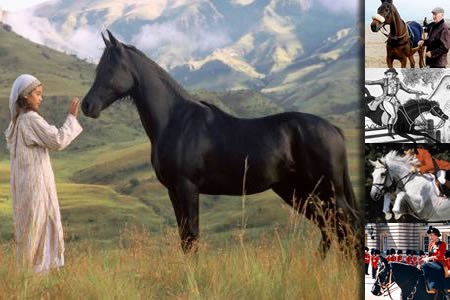
For thousands of years, man has had a unique bond with horses, relying on them as transport and a way of working an honest living long before the introduction of machines.
Trustworthy, fast, strong and athletic, these animals have proven their worth to man and still just as popular today, if not more.
BritEvents takes a look at the most famous horses in British History and what made them so well-known and loved.
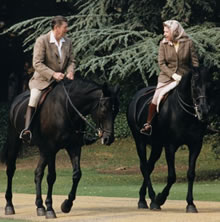
Burmese was a black mare given to Queen Elizabeth II in 1969 by the Royal Canadian Mounted Police. Burmese was favoured by Her Majesty and was her mount for Trooping the Colour for eighteen consecutive years, holding a special place in her heart.
In 1981 during the birthday parade, on the way to Trooping the Colour, Her Majesty was sitting on Burmese when six blank shots were fired from the crowd. Burmese was understandably startled but with reassurance from the Queen, she was able to remain under control, looking after her owner in a situation which could have ended badly.
Burmese retired in 1986 and has not been replaced, due to the Queen deciding to ride in a carriage rather than train a new horse. Burmese died in 1990 at Windsor Palace park, aged 28 years old, and a bronze statue in front of the Saskatchewan Legislative Building in Regina, Canada was unveiled in her honour.
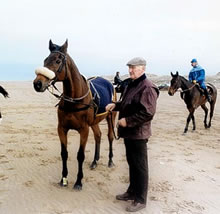
Sporting legend, Red Rum, is by far the most famous racehorse in British history. Winning the Grand National - an arduous course 4 miles in length that takes the lives of racehorses each year - three times in his racing career, his feats remain unsurpassed to this day. A courageous horse, Red Rum had an impressive jumping ability and out of 100 races, he fell just the once.
After an extraordinarily successful ridden career, Red Rum was retired in 1978 after suffering a hairline fracture. Still in the spotlight, Red Rum had become a national celebrity, annually leading the Grand National parade for many years. "Rummy" died on 18 October 1995 at 30 years of age, his death made the front page of national newspapers. As his long-term trainer, Ginger MacCain, said "There will never be another horse like him".
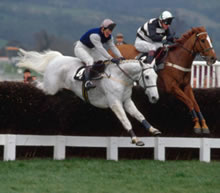
Desert Orchid was an English racehorse who created history and achieved iconic status by becoming the only horse to win the King George VI Chase four times. The stunning grey gelding was overlooked at the start of his career but quickly proved his worth as a bold steeple chaser when he was entered into races with bigger obstacles.
Desert Orchid's career highlight was the 1989 Cheltenham Gold Cup, a long and demanding track where rain and snow had made the going incredibly heavy. The crowd of nearly 60,000 went wild as the dashing grey gelding crossed the finish line in first place, dubbing the contest the 'race of the century'. After retiring, the gelding made numerous public fund-raising appearances before passing away, aged 27 years old.
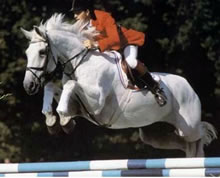
Marius Silver Jubilee, or Milton as he was better known, was a show jumping champion ridden and competed by world-renowned rider John Whitaker from 1985 -1994. In the nine years of his competitive career, Milton became the first horse outside of horse racing to win over 1 million in prize money.
A handsome horse and a crowd favourite, Milton stood 16.2hh tall and was grey in colour. He achieved many international victories with John Whitaker, including Spruce Meadows and the FEI World Cup Final two years in a row. Even after his retirement, Milton was adored by all. Milton died on 4 July 1999 and was buried at the Whitaker's farm in Yorkshire. To this day, the grey gelding is the most famous show jumper and there has yet to be another horse as successful.
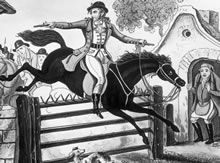
Black Bess was a horse from the 18th century, stolen from her owner at musket-point by infamous British highwayman, Dick Turpin. Canonised by the book Rookwood, written by Harrison Ainsworth nearly 100 years after Dick Turpin's death, Black Bess took Turpin from London to York in a day. However, historians have concluded the journey was not undertaken by the pair, yet it has been proved the mare did actually exist and was Turpin's steed for many journeys, aiding the escape from authorities hot on Turpin's heels.
With Black Bess referred to as "coal-black, with a skin smooth on the surface as polished jet; not a single white hair could be detected in her satin coat. She was magnificent - Every point was perfect, beautiful compact, modeled for strength and speed. Arched was her neck as lofty as that of the swan; clean and fine were her lower limbs, as those of the gazelle; round and sound as a drum was her carcass and as broad as a cloth yard shaft her width of chest." by Ainsworth, it is easy to see why such a vivid description of the mare earned her a place in Britain's folklore.
Black Bess' memory lives on to this day through the book but also by numerous pubs named after her, ballads, novellas and drawings; forever remembered for her strength, beauty and loyalty to Turpin.